This post may contain affiliate links. Please read our disclosure policy.
Taiwanese Braised Minced Pork and Rice (Rou Zao Fan) is a comforting and flavorful dish that brings the taste of Taiwan to your kitchen. This recipe features minced pork and eggs braised in a savory, aromatic sauce, perfect for topping a bowl of steamed rice. Whether you’ve had it in Taiwan or are trying it for the first time, this dish is sure to become a favorite.
In this post, we’ll guide you through making this delicious meal step-by-step, with tips for achieving authentic Taiwanese flavors. The aroma, taste, and warmth will leave you with an unforgettable experience. For a slow cooker version, check out my Taiwanese lu rou fan.
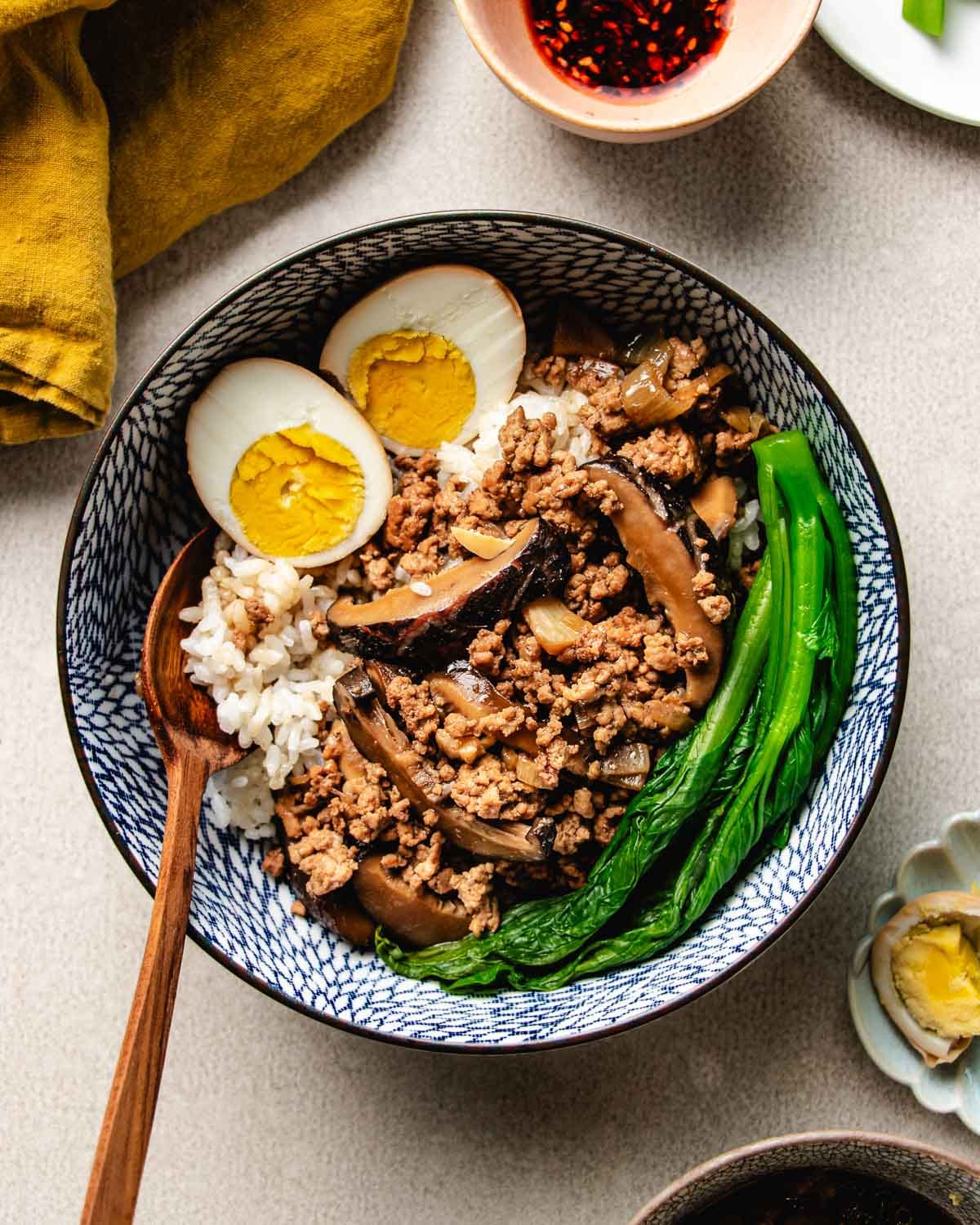
Table of Contents
What does rou zao fan taste like
Taiwanese minced pork and rice, also known as Rou Zao Fan (肉燥飯), is a beloved Taiwanese comfort food. This dish features minced pork and eggs braised in a fragrant, savory sauce, perfect for topping a bowl of steamed white rice. It’s often enjoyed with a side of fresh or pickled veggies.
Taiwanese pork mince and rice tastes savory, sweet, smoky, and earthy. Growing up in Taiwan, this dish is one of the most iconic and cherished. Every household and night market carries this dish, passing down the recipe through generations.
Difference between rou zao fan and lu rou fan
To understand the difference between Rou Zao Fan (肉燥飯 lo ba beng) and Lu Rou Fan (滷肉飯), you can start by looking at the appearance.
- Lu Rou Fan (Taiwanese braised pork): Uses pork belly with more fatty meat, simmered with the braising sauce, and has a stickier texture.
- Rou Zao Fan: Uses more lean ground meat, stir-fried first and then topped with braising sauce, offering a finer texture.
Ingredients
These are the ingredients you’ll need to make Taiwanese Braised Minced Pork. Each one adds its own special flavor to the dish.
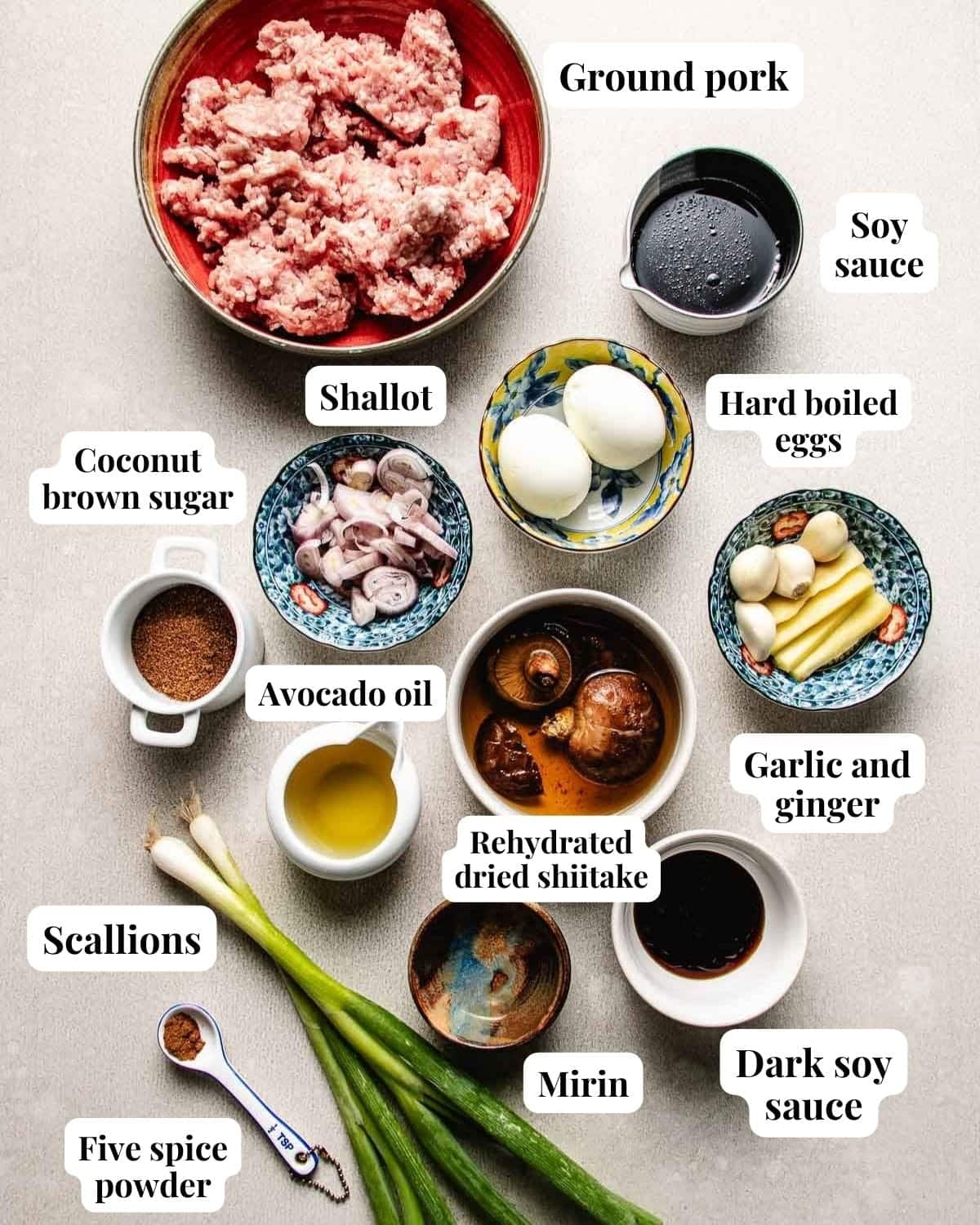
- Dried shiitake mushrooms: Adds a deep, earthy flavor. Rehydrate them in advance.
- Large eggs: Braised with the meat sauce, a signature ingredient you can’t miss!
- Shallots: The most crucial flavoring agent, fried to create crispy shallots and flavorful shallot oil.
- Garlic, Ginger, and Scallions: The holy trinity of Taiwanese cooking, adding depth and flavor to the braise.
- Avocado oil: Used for frying shallots and cooking pork, providing a neutral flavor.
- Ground pork: The main protein, offering a rich and savory base.
- Coarse salt: Enhances the overall flavor.
- Chinese Five-spice powder: Adds a complex blend of sweet, earthy, and cinnamon notes.
- Light soy sauce: Contributes a salty and umami flavor.
- Dark soy sauce: Adds a deeper color and richer flavor.
- Oyster sauce: Provides a sweet, salty, and slightly briny taste.
- Brown sugar: Adds sweetness and balances the savory flavors.
- Shiitake mushroom soaking liquid: Used as stock, infusing the dish with a woodsy flavor.
- Taiwanese michu, shaoxing wine, or gluten-free mirin: Adds a touch of sweetness and depth to the sauce.
Other add-ons: It’s also common to add bamboo shoots and tofu puffs to the stew.
Can I use fresh mushrooms instead of dried shiitake?
You can, but the flavor won’t be as intense or authentic. The braising liquid from soaking dried shiitake is packed with woodsy umami goodness. If you use fresh shiitake, you’ll need to substitute it with chicken stock, which will slightly alter the flavor and intensity.
How to make Taiwanese minced pork and rice
Cooking this dish always brings back fond memories of family dinners in Taiwan. It’s a comforting, flavorful meal that’s surprisingly easy to make at home. Follow these steps to create your own delicious Taiwanese Braised Minced Pork.
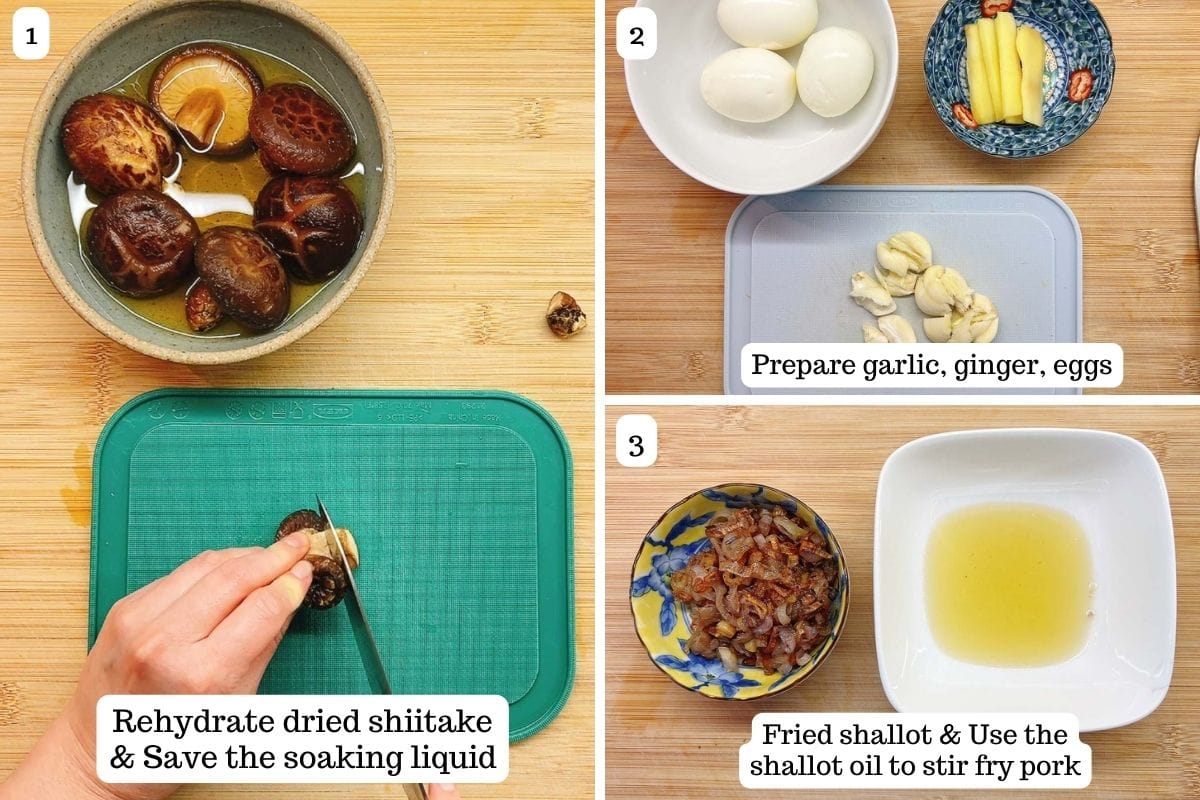
- Rehydrate Mushrooms: Soak dried shiitake mushrooms in water overnight or for at least 6 hours. Strain and save the soaking liquid.
- Prepare Ingredients: Boil and peel the eggs. Slice the shallots, and prepare garlic, ginger, and scallions.
- Crispy Shallot and Shallot Oil: Start with a cold pan. Add oil and shallots, then fry over medium heat until golden brown (about 10 minutes). Strain and set aside.
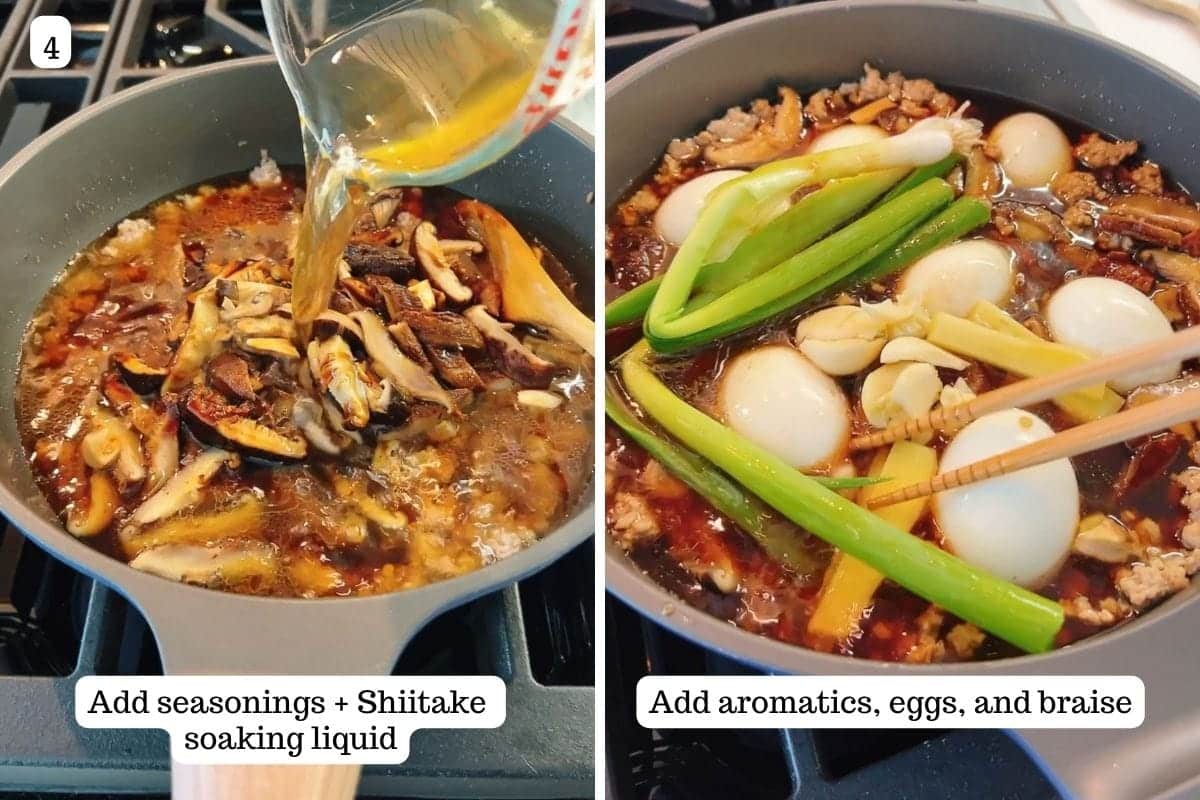
- Cook Pork with Shallot Oil: Preheat the pan with reserved shallot oil. Add pork, season with salt, and cook until no longer pink (5-6 minutes).
- Season and Braise: Add fried shallots, garlic, ginger, five-spice powder, soy sauces, oyster sauce, brown sugar, mushroom soaking liquid, hard-boiled eggs, and green onion. Simmer for 45 minutes.
- Final Touch: Add a splash of Taiwanese michu or gluten-free mirin. Simmer for 10 more seconds.
- Serve: Serve over steamed rice with blanched veggies. Optionally, add garlic chili sauce.
Instant Pot Cooking Time
- Saute Shallots: Use the Saute function to cook the shallots. Add a bit more oil to prevent sticking.
- Braise: Seal the valve and press Manual for High pressure, cooking for 15 minutes. Allow natural release for 15 minutes, then quick release.
- Finish: Press the Saute function again to finish the rest of the steps.
Tips for Authentic Taiwanese Flavor!
Rehydrate the dried shiitake and use the mushroom water as your stock to braise the pork mince. Fry the pork with shallot oil and don’t forget to add the eggs. They make the best Taiwanese-style soy sauce braised eggs. 🙂
What to serve with Taiwanese braised minced pork
Taiwanese usually serve meat sauce with white rice and a refreshing side to keep it light yet balanced. Here are some ideas to get you started:
- Rice: For the perfect base, try Din Tai Fung Fried Rice with Shrimp, or learn How to Cook White Rice in a Rice Cooker. If you prefer something stickier, go for Sticky Rice in a Rice Cooker. For a quick and easy option, try Air Fryer Rice.
- Cucumber Sides: Add a refreshing crunch with Asian Pickled Cucumbers, Chinese Smashed Cucumbers, or an Asian Cucumber Salad. These sides provide a crisp and tangy balance to the rich flavors of the pork rice bowl.
- Vegetables: Complement your meal with Yu Choy with Garlic Sauce, Sautéed Taiwanese Cabbage, or Din Tai Fung Green Beans made in the air fryer. These vegetable dishes add a nutritious and flavorful touch to your meal.
ChihYu’s expert tips
- Prepare in Advance: Rehydrate the dried shiitake mushrooms overnight and boil and peel the eggs ahead of time to streamline the cooking process.
- Use Mushroom Water: Don’t skip using the mushroom soaking liquid as stock—it adds a deep, earthy flavor that’s essential for authenticity.
- Crispy Shallots and Shallot oil: Start with a cold pan when frying shallots to ensure they become perfectly crispy and don’t burn.
- Add Boiled Eggs: Make sure the eggs are hard-boiled and peeled before adding them to the braise. They absorb the savory sauce, becoming deliciously flavored and tender.
- Let it Simmer: Allow the dish to simmer for the full 45 minutes to ensure the flavors meld together perfectly.
- Leftover Braising Liquid: Use the flavorful braising liquid to make soup with bok choy, napa cabbage, or add boiled Chinese noodles for a tasty noodle soup.
FAQs
More Taiwanese recipes
If you love making Taiwanese Braised Minced Pork, you’ll definitely want to try these other delicious Taiwanese dishes. Each one brings unique flavors and textures to your table, showcasing the best of Taiwanese cuisine.
- Taiwanese Popcorn Chicken: Air-fried, crispy chicken bites seasoned with five-spice and basil.
- Taiwanese Fried Chicken Cutlets: Thin, marinated chicken breasts, crispy outside, and moist inside.
- Taiwanese Cold Sesame Noodles: Chewy noodles in a savory sesame sauce, served chilled.
- Taiwanese Cold Peanut Noodles: Noodles with a creamy peanut sauce, perfect for a quick meal.
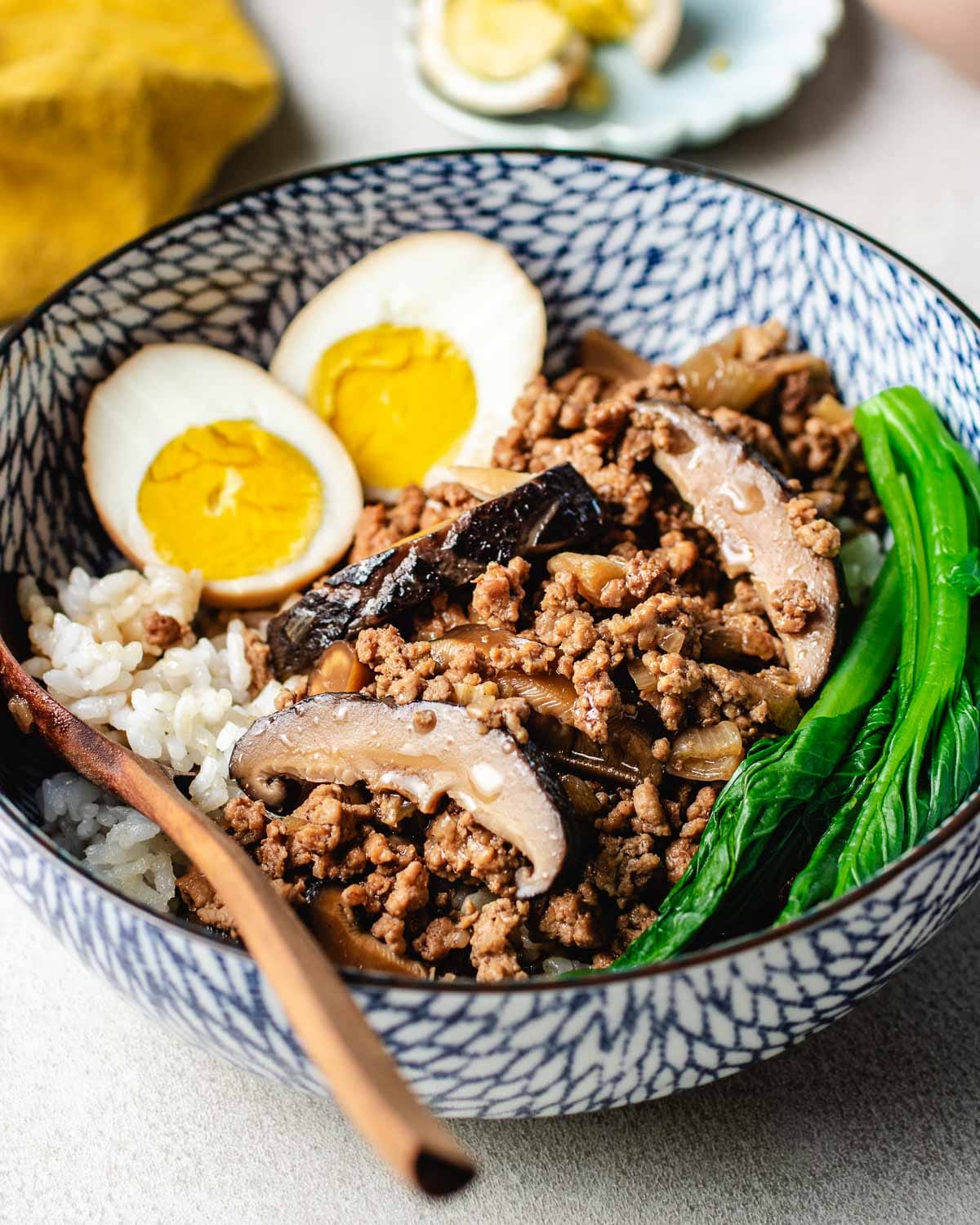
Taiwanese braised minced pork recipe (Rou zao fan)

Video
Ingredients
- 2 oz dried shiitake 5 large caps or 8-9 medium caps
- 6 large eggs hard boiled and peeled
- 4 oz shallot thin slice to rounds, 2 large
- 0.6 oz garlic cloves smashed in whole, 4 large
- 0.6 oz ginger peeled and slice to large thin pieces
- 2 bulb scallion leave in whole with white parts smashed
- 4 tbsp avocado oil
- 1 lb ground pork
- ½ tsp coarse salt
- ¼ tsp five spice powder
- 3 tbsp light soy sauce
- 1 tbsp dark soy sauce
- 2 tbsp oyster sauce or Taiwanese thick soy sauce
- 2 tbsp brown sugar
- 4 cups mushroom soaking liquid stock for braising
- A splash Taiwanese michu or gluten-free mirin
Serving suggestions:
- Steamed white rice
- Blanched Yu choy bok choy, or baby Chinese broccoli
- Garlic chili sauce or Shacha sauce, optional
Instructions
To prepare:
- To rehydrate the dry shiitake, in a large bowl, soak the mushrooms in room temperature water overnight or at least 6 hours. The bowl should be large enough to hold 5 cups of water. Loosely cover the bowl and set aside in a cool and shaded spot. After that, wring out the mushroom, strain and save the mushroom soaking liquid to use as stock. Thinly slice the mushrooms. See our How to cook dried shiitake mushrooms for more details.
- Others: Prepare the hard boiled eggs, peel and set them aside ready to use. Thin slice the shallot to rounds and set aside in one bowl. Prepare the garlic, ginger, and scallions on a separate plate.
Crispy shallot and shallot oil:
- In a large wok or deep sauteing pan (that can hold at least 6 cups of liquid and with a lid to cover), start the pan cold without preheating it. Add the oil and shallot and fry over medium-heat, stirring periodically until they turn light golden brown, about 10 minutes.
- Strain the shallot and the oil through a sieve to separate the two. Set the shallot aside in a separate bowl and return the oil back to the pan. We’ll use this oil to cook the pork, creating the signature flavor of Taiwanese rou zao fan.
Cook pork with shallot oil:
- Preheat the pan over medium heat until it feels warm. Add the pork and use a wooden spoon to break into fine bites. Season with salt and cook over medium to medium-high heat until the pork is no longer pink, 5-6 minutes.
Season and braise:
- Add the fried shallot, garlic, ginger, five spice powder, light and dark soy sauces, oyster sauce, brown sugar, mushroom soaking liquid, eggs, and whole scallions folded in half to fit into the pot. Gently stir and press to submerge the aromatics and the eggs under the liquid.
- Close the lid and bring the pot to a gentle boil, 3-4 minutes, then lower the heat to simmer for 45 minutes. Stir the pot periodically. If the pot cover does not have a ventilation hole, keep the lid slightly ajar to prevent spill over.
Final touch:
- After braising, there should be a sufficient amount of liquid from the stew left in the pot. If the pot seems a bit dry, add more mushroom soaking liquid. For reference, I added ¼ cup back to the pot.
- Add a splash of Taiwanese cooking wine (Michu), if using. Simmer for 10 more seconds and turn off the heat.
To serve:
- Add the rice to the serving bowl, top with a few large spoonfuls of the meat sauce with braising liquid. Halve the egg and garnish with the vegetable on the side. Serve hot or warm.
Instant Pot cooking time:
- Use the Saute function to cook the shallots. Add a bit more oil to prevent sticking. When braising, seal the valve – press Manual for High pressure 15 minutes. Allow natural release for 15 minutes before quick release. Press Saute function again to finish the rest of the steps.
Notes
- Make-Ahead Friendly: The meat sauce and marinated eggs taste even better the next day.
- Preparation: Rehydrate the shiitake mushrooms overnight and boil and peel the eggs in advance to streamline the process.
- Braising Liquid: The braising liquid is thin but packed with savory, sweet, and earthy flavors.
- Extra Flavor: Add a piece of star anise to the pot for a stronger flavor.
- Aromatics: You can leave the aromatics in the pot or discard them after braising. They become soft and edible.
- Storage: Store in an airtight container in the fridge for 4-5 days.
- Reheating: Scoop off any solidified fat before reheating on the stovetop or in the microwave.
- Leftover Braising Liquid: Use the flavorful braising liquid to make soup with bok choy, napa cabbage, or add boiled noodles for noodle soup.
Nutrition
Nutrition information is automatically calculated, so should only be used as an approximation.
Made a dish and loved it? Please rate the recipe and leave a comment in the section below! It helps my blog grow organically, allowing me to continue sharing free and awesome content with you. Thank you!
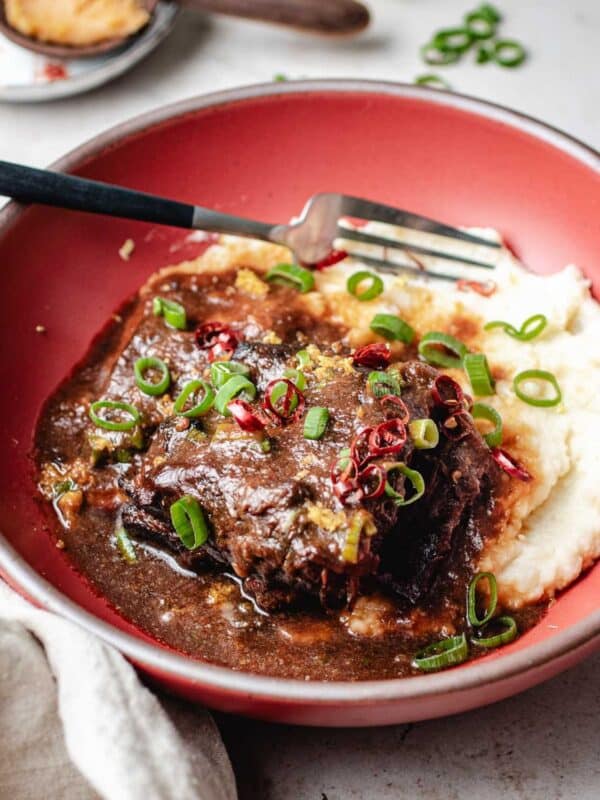
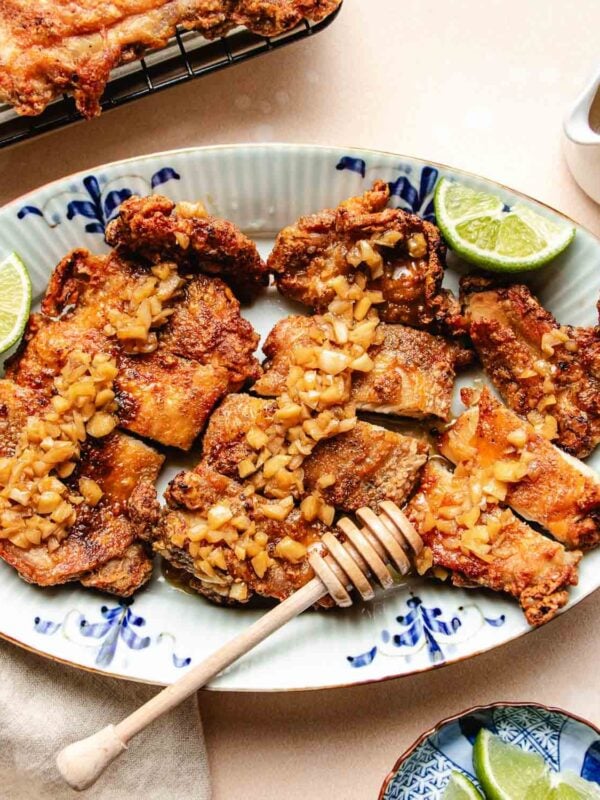
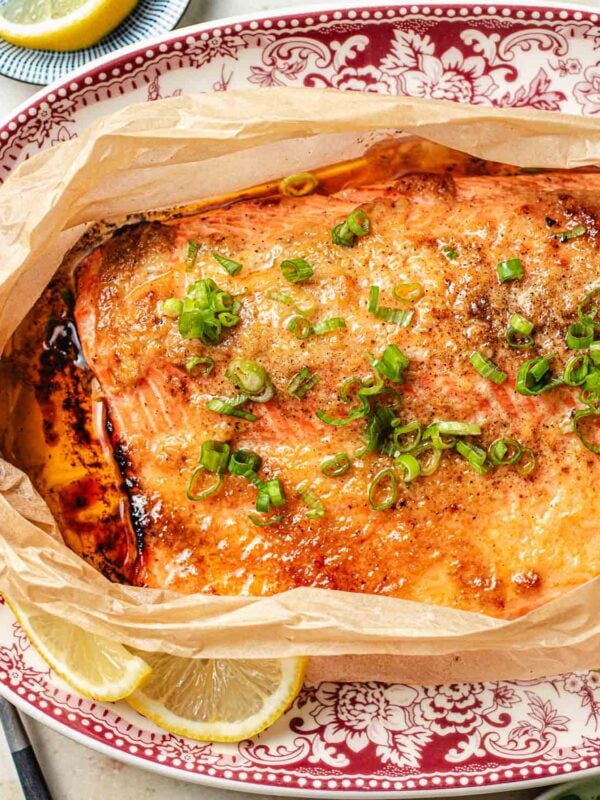
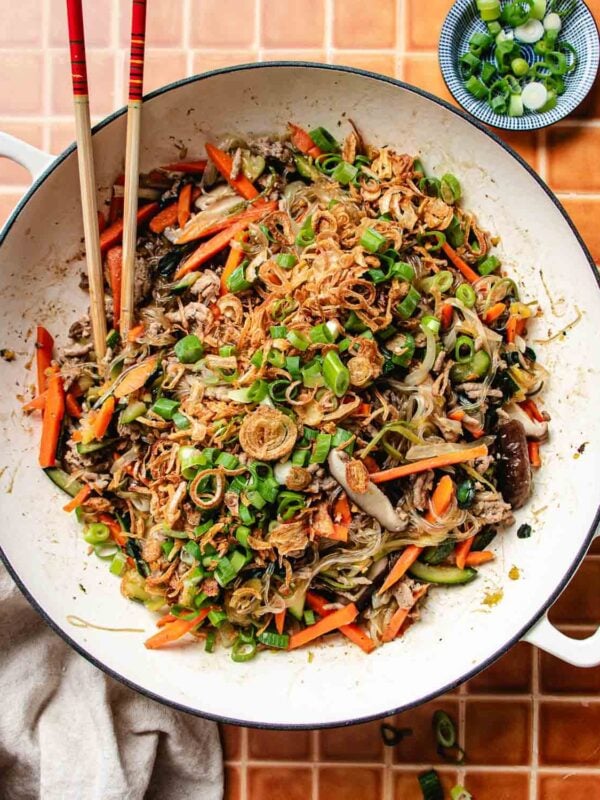
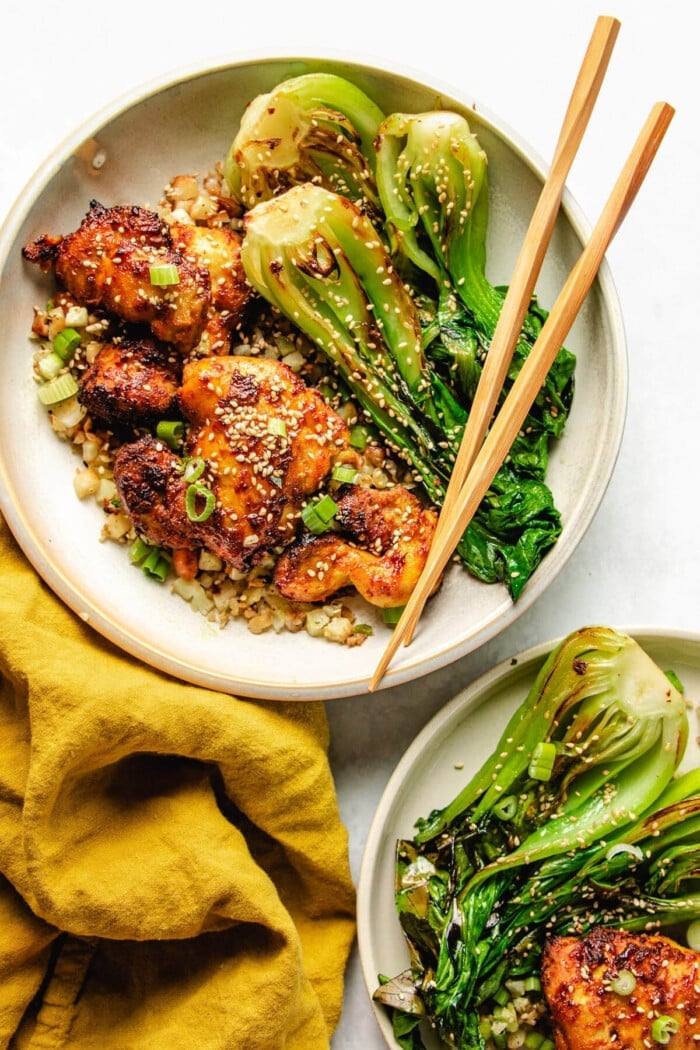








My kids love this! Thank you.
That’s wonderful. Thank you so much for making the dish!
Taiwanese husband and kids approves. I should’ve soaked the shiitake longer and added more but other than that this was delicious. No leftovers here!
Thank you so so much! It means a lot coming from you and the family. Truly appreciate it and thanks for coming back here to share it with us. 🙂